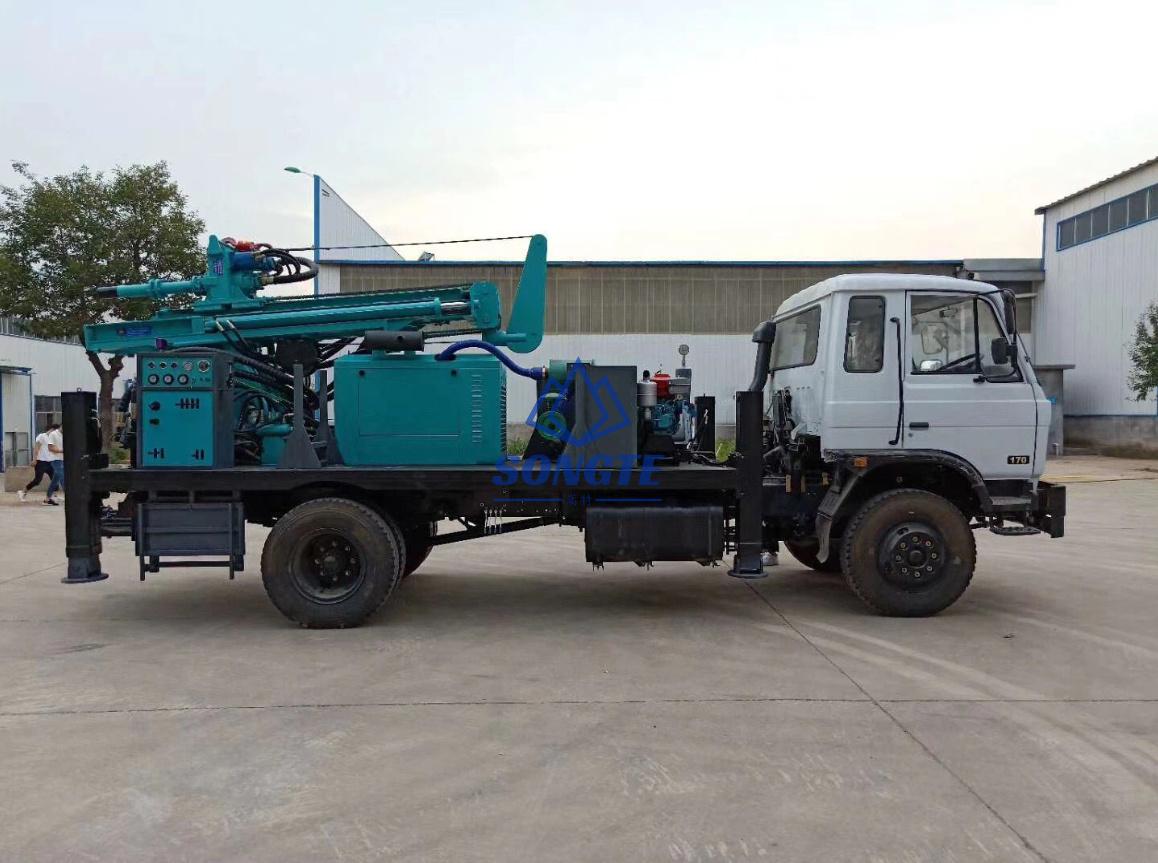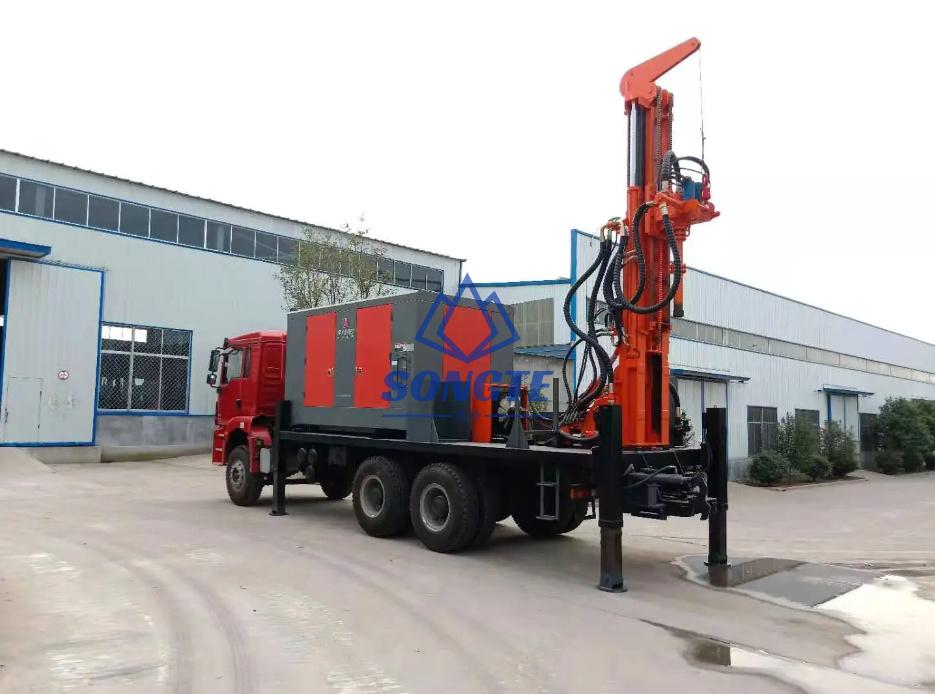Water well drilling rigs are important tools used to extract groundwater from beneath the Earth’s surface. However, during the drilling process, it is common to encounter various soil layers that can pose challenges to the operation. In this article, we will discuss some techniques and methods for handling different soil layers encountered by water well drilling rigs.

350m Truck Mounted Water Well Drills For Deep Wells (SW-350T)
Clay and Silt Layers
Clay and silt layers are often encountered in the upper portions of a well. These layers can be difficult to drill through as they are sticky and can cause the drilling tools to get stuck. One way to handle these layers is to use a drilling mud. A drilling mud is a mixture of water and bentonite clay that is pumped into the well to lubricate the drilling tools and prevent the clay from sticking. The mud also helps to stabilize the walls of the well and prevent collapse.
Sand Layers
Sand layers are often encountered in the middle to lower portions of a well. These layers can be problematic as they can collapse and fill the well bore. To prevent this, the drilling rig can use casing. Casing is a large steel pipe that is lowered into the well bore and cemented in place. The casing provides support to the well walls and prevents the sand from collapsing into the well.
Rock Layers
Rock layers are often encountered in the lower portions of a well. These layers can be challenging to drill through as they are hard and abrasive. One way to handle these layers is to use a tricone bit. A tricone bit is a drilling tool that has three cones with teeth on them that rotate and grind through the rock. Another option is to use a diamond bit. Diamond bits are coated in industrial diamonds that can cut through even the hardest rock.
Gravel Layers
Gravel layers are often encountered in the upper portions of a well. These layers can be difficult to drill through as the gravel can get stuck in the drilling tools. To handle these layers, the drilling rig can use a gravel pack. A gravel pack is a layer of small, clean gravel that is placed around the well screen. The gravel pack helps to stabilize the well screen and prevent it from collapsing.
Claystone Layers
Claystone layers are often encountered in the middle to lower portions of a well. These layers can be difficult to drill through as they are hard and brittle. To handle these layers, the drilling rig can use a mud motor. A mud motor is a drilling tool that is powered by the drilling mud. The mud motor can be used to drill through the claystone without damaging the drilling tools.
In conclusion, water well drilling rigs encounter various soil layers during the drilling process, and each layer requires a different approach to handle it effectively. Using the appropriate drilling tools and techniques can help prevent drilling delays and ensure a successful well installation.

200m Truck Mounted Deep Well Drilling Rig With Air Compressor (SW-200T)
 songtemachine
songtemachine
